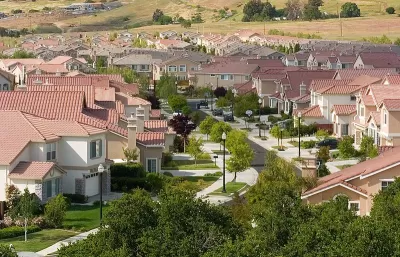Experts caution that to encourage significant new housing production, other zoning reforms that reduce costs and streamline permitting should accompany increased density requirements.

In yet another cautionary article warning planners of the limitations of upzoning, Carl Smith reports on a Connecticut study that reveals that eliminating single-family zoning is only one step toward reducing the massive gap between affordable housing supply and demand. The study was conducted by Desegregate Connecticut, which created a first-of-its-kind map that details zoning codes in each of the state's jurisdictions, allowing planners to compare different zoning regulations and understand how they interconnect.
Their analysis found that "a surprising number of other zoning requirements have the potential to interfere with efforts to open more land to multifamily dwellings." These include public hearing requirements that can delay or derail projects, minimum parking requirements, height limits, lot coverage, floor area ratio requirements, and occupancy restrictions. As others have pointed out, upzoning alone doesn't guarantee new construction if demand doesn't exist or other restrictions make development too onerous and expensive.
Advocates like Desegregate Connecticut are pushing for other zoning reforms that, together with upzoning, will make a real positive impact on the housing market. Thanks in part to Desegregate CT's efforts, which we covered last March, the Connecticut state legislature passed Public Act 21-29, a bill that addresses many of the above concerns and implements more comprehensive zoning reform that goes beyond density to remove other barriers to new housing.
FULL STORY: Ending Single-Family Zoning Is Not a Stand-Alone Solution

Alabama: Trump Terminates Settlements for Black Communities Harmed By Raw Sewage
Trump deemed the landmark civil rights agreement “illegal DEI and environmental justice policy.”

Planetizen Federal Action Tracker
A weekly monitor of how Trump’s orders and actions are impacting planners and planning in America.

The 120 Year Old Tiny Home Villages That Sheltered San Francisco’s Earthquake Refugees
More than a century ago, San Francisco mobilized to house thousands of residents displaced by the 1906 earthquake. Could their strategy offer a model for the present?

Opinion: California’s SB 79 Would Improve Housing Affordability and Transit Access
A proposed bill would legalize transit-oriented development statewide.

Record Temperatures Prompt Push for Environmental Justice Bills
Nevada legislators are proposing laws that would mandate heat mitigation measures to protect residents from the impacts of extreme heat.

Downtown Pittsburgh Set to Gain 1,300 New Housing Units
Pittsburgh’s office buildings, many of which date back to the early 20th century, are prime candidates for conversion to housing.
Urban Design for Planners 1: Software Tools
This six-course series explores essential urban design concepts using open source software and equips planners with the tools they need to participate fully in the urban design process.
Planning for Universal Design
Learn the tools for implementing Universal Design in planning regulations.
Clanton & Associates, Inc.
Jessamine County Fiscal Court
Institute for Housing and Urban Development Studies (IHS)
City of Grandview
Harvard GSD Executive Education
Toledo-Lucas County Plan Commissions
Salt Lake City
NYU Wagner Graduate School of Public Service





























